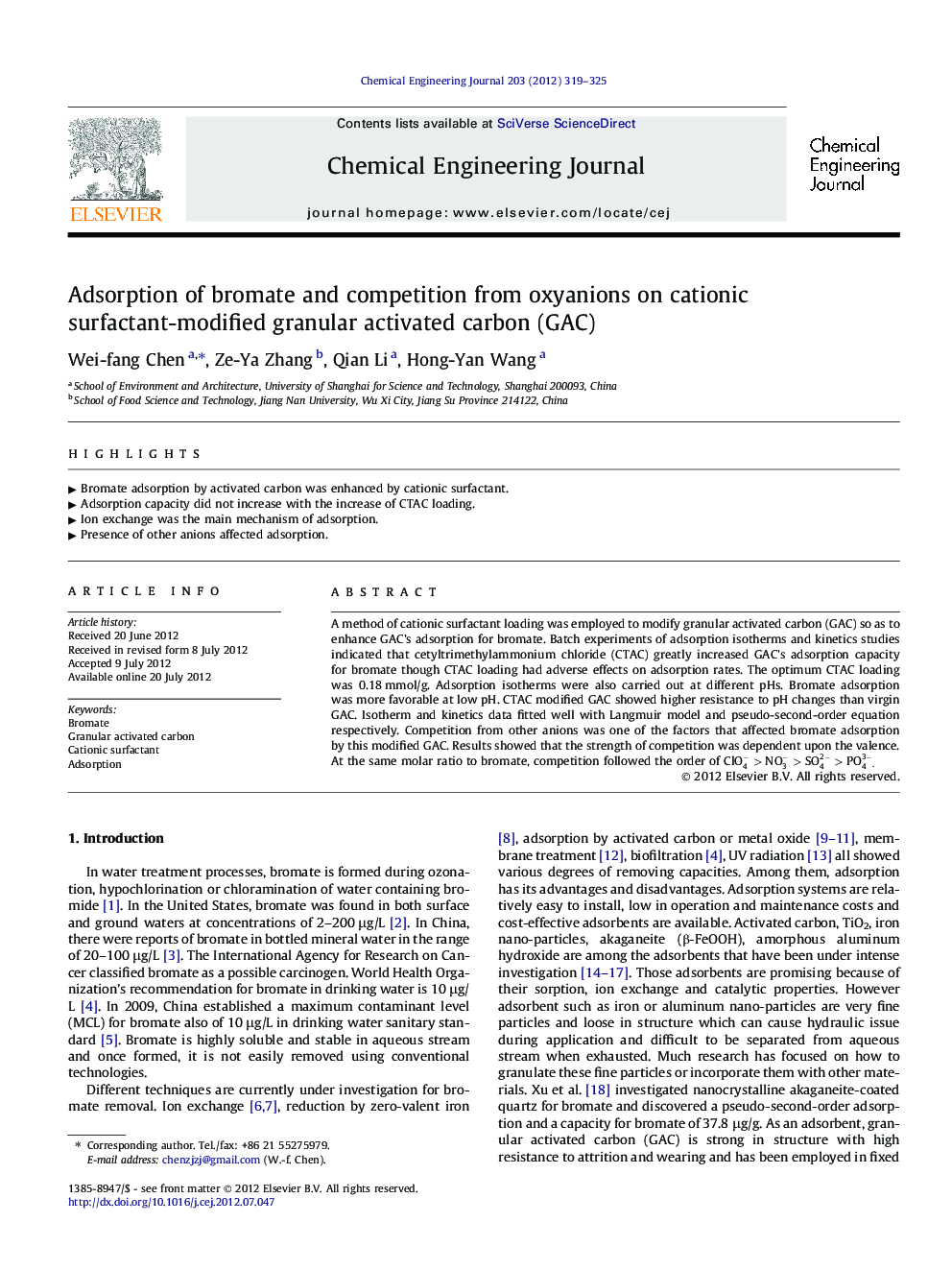| Article ID | Journal | Published Year | Pages | File Type |
|---|---|---|---|---|
| 149293 | Chemical Engineering Journal | 2012 | 7 Pages |
A method of cationic surfactant loading was employed to modify granular activated carbon (GAC) so as to enhance GAC’s adsorption for bromate. Batch experiments of adsorption isotherms and kinetics studies indicated that cetyltrimethylammonium chloride (CTAC) greatly increased GAC’s adsorption capacity for bromate though CTAC loading had adverse effects on adsorption rates. The optimum CTAC loading was 0.18 mmol/g. Adsorption isotherms were also carried out at different pHs. Bromate adsorption was more favorable at low pH. CTAC modified GAC showed higher resistance to pH changes than virgin GAC. Isotherm and kinetics data fitted well with Langmuir model and pseudo-second-order equation respectively. Competition from other anions was one of the factors that affected bromate adsorption by this modified GAC. Results showed that the strength of competition was dependent upon the valence. At the same molar ratio to bromate, competition followed the order of ClO4->NO3->SO42->PO43-.
► Bromate adsorption by activated carbon was enhanced by cationic surfactant. ► Adsorption capacity did not increase with the increase of CTAC loading. ► Ion exchange was the main mechanism of adsorption. ► Presence of other anions affected adsorption.
